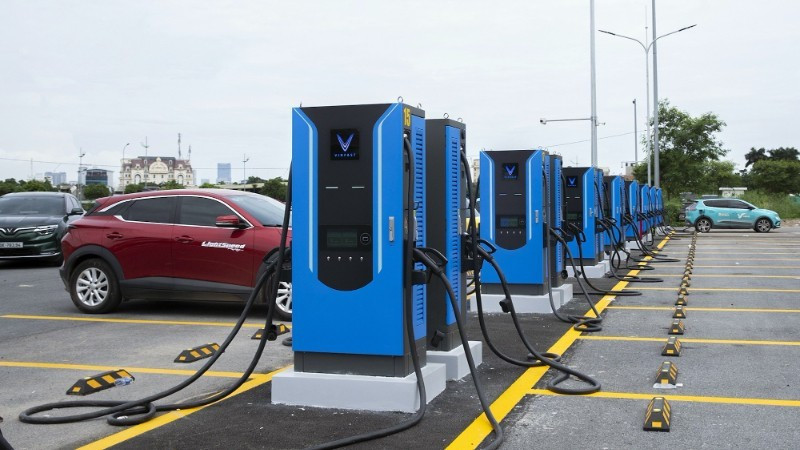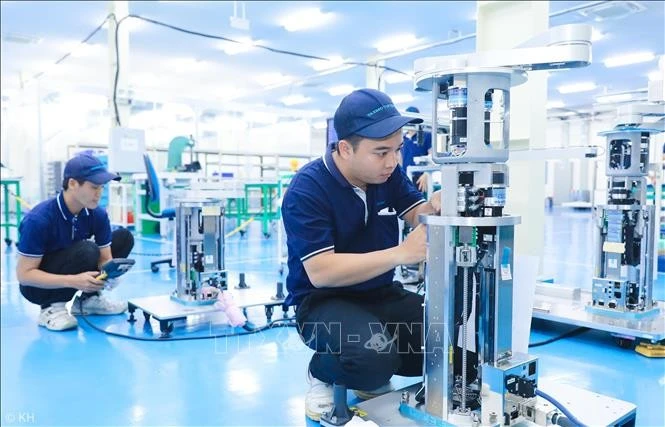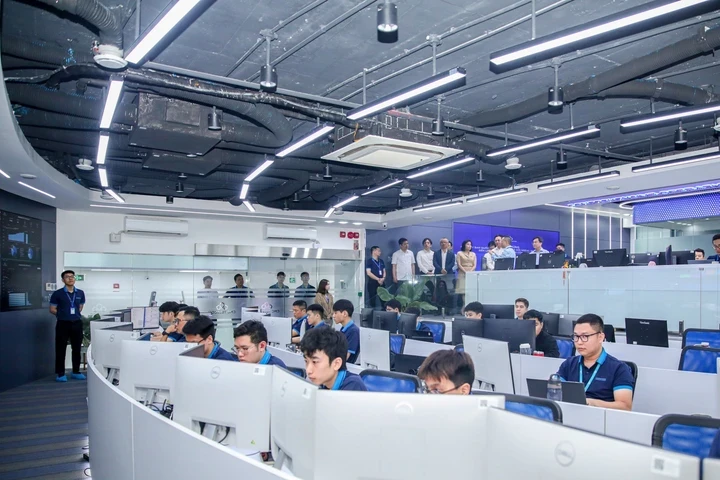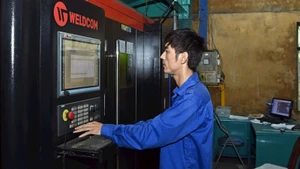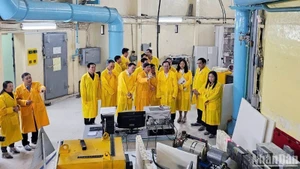Planning of charging stations
Phan Truong Thanh, Head of the Investment Finance Division under the Ha Noi Department of Construction, stated that preliminary surveys show the population within the Ring Road 1 area of Ha Noi is around 600,000, with a total of about 450,000 motorbikes. The policy to prohibit fossil fuel-powered motorcycles and mopeds from operating within Ring Road 1 starting from July 1, 2026, will also affect residents from outside the area who commute in for work and business purposes. Therefore, assessing and surveying the population and vehicles is a fundamental requirement, as reliable input data is crucial to formulating appropriate solutions.
To implement Directive 20/CT-TTg dated July 12, 2025, by the Prime Minister, Ha Noi will follow a step-by-step plan. First, it will conduct surveys to assess the affected populations both within Ring Road 1 and from surrounding areas commuting into it.
Subsequently, the city will work to complete institutional policies regarding vehicle management, traffic demand control, citizen and business support, and investment in infrastructure. At the same time, it will develop overall transport infrastructure, especially public transport.
One of the key components of electric vehicle infrastructure is the network of charging stations. Addressing public concerns about the number and capacity of charging stations, Phan Truong Thanh noted that Ha Noi currently has around 1,000 charging poles for various types of vehicles, including public buses, general and private electric cars, electric motorbikes, and electric bicycles. The Ha Noi People’s Committee has instructed a thorough review and planning of charging station locations so that businesses and investors know where to invest in charging infrastructure.
Relevant authorities are currently reviewing all parking lots and locations within and along Ring Road 1 to install charging poles and increase the number of parking spots in these areas. This will allow people from outside the ring road to park and switch to appropriate means of transport. For old apartment buildings, there must also be assessments of residents’ needs and public area planning for charging stations, along with monitoring the technical standards of private charging installations.
Promoting battery technology research
Many experts have affirmed that in addition to expanding the charging station network, it is necessary to promptly issue technical regulations and standards for charging poles to establish uniform guidelines and help businesses with development planning.
The draft National Technical Regulation on electric vehicle charging poles, developed by the Ministry of Science and Technology, has been completed and submitted to the Minister for approval in the near future.
Nguyen Van Khoi, Head of the Standards Division (National Committee for Standards, Metrology, and Quality).
Nguyen Van Khoi, Head of the Standards Division under the National Committee for Standards, Metrology, and Quality, said the draft National Technical Regulation on electric vehicle charging poles, prepared by the Ministry of Science and Technology, has been finalised and submitted to the Minister for consideration and issuance. The draft was developed based on international standard IEC 61851-1:2017, which is widely adopted globally, while taking into account Viet Nam’s specific socio-economic development context.
Specifically, electric vehicle charging poles must meet several technical requirements, such as protection against electric shock, inclusion of circuit breakers for overloads or short circuits, electromagnetic compatibility (EMC) to avoid interference with other devices, standardised plug connector specifications, and internationally standardised data exchange and communication protocols between vehicles and chargers. Electricity consumption meters integrated into charging poles must also be tested and approved in the same way as regular electric meters, to ensure transparent electricity transactions and protect consumer rights.
The key hardware component of electric vehicles is the battery. However, current regulations only manage batteries for electric bicycles and electric motorbikes through national technical standards QCVN 76:2019/BGTVT (for electric bicycle batteries) and QCVN 91:2024/BGTVT (for electric motorbike batteries), along with several national voluntary standards. There is still no technical regulation for electric car batteries. As such, experts suggest referring to international standards to develop national technical regulations for electric vehicle batteries.
In addition, it is essential to establish a legal framework for the collection, handling, and recycling of electric vehicle batteries after their lifespan ends, as well as for quality management of batteries throughout their product lifecycle. This is necessary to ensure safety, environmental protection, and sustainable development of the electric vehicle industry.
In the long term, beyond standardising charging infrastructure, we must conduct research to gradually master battery technology — from material structure to recycling and waste treatment — because relying solely on imported batteries means losing control over technology, costs, and safety.
Associate Professor, Doctor Nguyen The Luong, Centre for Research on Power Sources and Autonomous Vehicles , Ha Noi University of Science and Technology.
According to Associate Professor, Doctor Nguyen The Luong, from the Centre for Research on Power Sources and Autonomous Vehicles (Ha Noi University of Science and Technology), beyond standardising charging infrastructure, it is essential in the long run to conduct research to gradually master battery technology, from material structure to battery recycling and waste treatment. Relying solely on imported batteries would result in a lack of control over technology, costs, and safety.
The shift to clean-energy vehicles is a global trend already being implemented by many countries. These countries are also prioritising battery research and production. Nations such as the Republic of Korea, China, Thailand, and India, along with setting goals for electric vehicle industry development, have policies to support domestic battery production investment.
As for the status of battery treatment research and application in Viet Nam, domestic research remains at a basic level, focusing on recovering valuable materials from used batteries rather than comprehensive treatment processes. Some domestic research institutes and universities have published procedures for recovering and reusing materials from batteries, but the efficiency and purity levels still do not meet the requirements for manufacturing new batteries.
Many scientists believe that there must be policies to promote and support research to improve efficiency, purity, and the reusability of recovered battery materials. At the same time, a waste battery management system must be developed, assigning responsibilities to manufacturers, importers, and consumers to ensure safe collection and processing.
